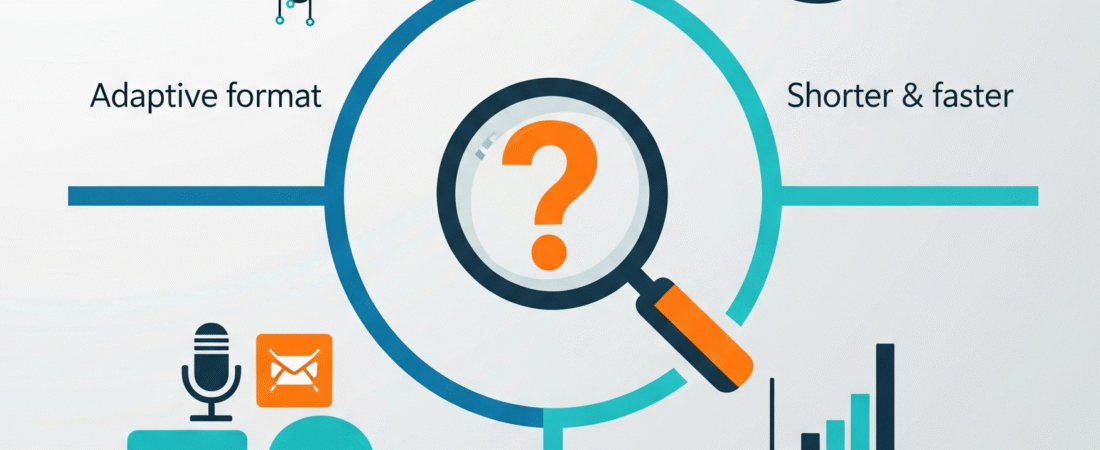Meta Description:
Learn about the TOEFL iBT’s 2026 transformation: adaptive format, shorter timing, modern content, CEFR-aligned scoring, and prep strategies.
🌍 Introduction
If you’re planning to take the TOEFL iBT in the near future, there’s big news you need to know. Starting January 21, 2026, ETS (Educational Testing Service) will introduce the most substantial update in TOEFL history. The new design is smarter, faster, fairer, and more relevant to modern-day communication—without compromising its academic integrity.
This guide will walk you through everything you need to know about the 2026 TOEFL iBT update: from the adaptive format and content changes to updated scoring, timing, and prep strategies.
🔍 Why Is the TOEFL iBT Changing?
The upcoming changes reflect ETS’s goals to modernize the test by:
- Reducing cultural bias and increasing fairness.
- Adapting difficulty in real-time, making it a personalized and efficient exam.
- Aligning with international standards like the CEFR.
- Delivering faster results to meet the needs of students, institutions, and governments.
In short, the 2026 TOEFL is all about being shorter, sharper, and smarter—without sacrificing reliability or global recognition.
🎯 The New Adaptive Format: What It Means
In 2026, the Reading and Listening sections of the TOEFL iBT will become multistage adaptive.
How It Works:
- Everyone starts with a moderate difficulty module.
- Based on performance, you’re routed to a second module that is easier or harder.
- Your score reflects not only how many answers you got right but how difficult the questions were.
Why This Matters:
- No more “skipping and returning later.” Your early performance is critical.
- Test time is reduced without losing precision in scoring.
- The test adapts to you, making every question count.
📚 Section-by-Section Breakdown
📰 Reading Section (18–27 Minutes)
New Tasks Include:
- Complete the Words: Fill in missing letters in a paragraph to test vocabulary and context.
- Read in Daily Life: Interpret texts like menus, posters, or web content (15–150 words).
- Short Academic Reading: Condensed versions of traditional academic texts with 5 questions.
🎧 Listening Section (18–27 Minutes)
Updated Features:
- Choose a Response: Hear a sentence and select the most logical reply.
- Casual Conversations: Focused on daily life, not just campus settings.
- Mini-Lectures and Announcements: Snippets from classroom talks or public messages (100–250 words).
🗣 Speaking Section (~8 Minutes)
Biggest Changes:
- Listen and Repeat: Reproduce short sentences, testing pronunciation and memory.
- Take an Interview: Respond to 4 spontaneous questions with no prep time. You’ll have 45 seconds to answer each, simulating real-life speaking challenges.
✍ Writing Section (~23 Minutes)
Fresh Task Types:
- Build a Sentence: Reorder jumbled words into a grammatically correct sentence.
- Write an Email: Respond to a situational prompt in under 7 minutes.
- Academic Discussion (Retained): Continue the classic written contribution to an academic forum.
📊 Scoring Gets Simpler: New 1–6 Band Scale
Starting January 2026:
- Scores will range from 1 to 6, with 0.5 increments.
- Scores are aligned with the CEFR (Common European Framework of Reference for Languages).
- Overall score is an average of all four section scores.
- A transition period (until January 2028) will include dual scores: the old 0–120 and the new 1–6 band scale.
- Faster delivery: Scores will be available within 72 hours of testing.
🧠 What This Means for Test Takers
The 2026 TOEFL update is not just cosmetic—it will transform how you prepare. Here’s how to stay ahead:
✅ Start Strong
- With adaptive testing, the first set of questions determines your path—no room for warming up.
- Focus on accuracy and time management from the first question.
🧠 Master New Task Types
- Practice sentence reconstruction and email writing under time pressure.
- Get familiar with repetition tasks by echoing native speakers and recording yourself.
- Simulate the interview format with a timer and spontaneous speaking prompts.
📚 Modern Content Exposure
- Read blogs, emails, social media posts, and announcements to build comfort with real-world English.
- Use listening drills based on short dialogues, announcements, and mini-lectures.
🛠 Tools and Prep Resources
📆 Timeline You Need to Know:
| Date | Update |
|---|---|
| May 30, 2025 | Home Edition enhancements rollout |
| July 2025 | New prep materials become available |
| Jan 21, 2026 | New format goes live worldwide |
| Thru Jan 2028 | Dual score reporting (1–6 & 0–120) |
📘 Recommended Resources:
- Official ETS Prep: Expect adaptive practice tests by mid-2025.
- Third-Party Tools: BestMyTest, My Speaking Score, and TOEFL Resources are updating platforms.
- Peer Practice: Try real-time virtual speaking practice with a partner or tutor.
💬 Conclusion: Smarter TOEFL, Smarter You
The 2026 TOEFL iBT update is a game-changer—making the test faster, more relevant, and more aligned with global standards. By adapting your prep strategies today, you’ll not only adjust to the new format but leverage it to your advantage.
Need help mastering the new structure? As your trusted tutor, I can help you break it down section by section, test your skills, and build confidence—before the big change hits.
❓FAQs: TOEFL 2026 Edition
Q1: When do these changes start?
A: The new format launches globally on January 21, 2026.
Q2: Can I still take the current version of TOEFL?
A: Yes, up to January 20, 2026. After that, all tests use the new format.
Q3: What if my university still uses the 0–120 scale?
A: You’ll receive both scores through January 2028 to ease the transition.
Q4: How do I know what band score I need?
A: Most universities will share updated CEFR-aligned band requirements starting in 2025.
Q5: Can I take this test from home?
A: Yes! The TOEFL Home Edition remains available and will include the new features.

